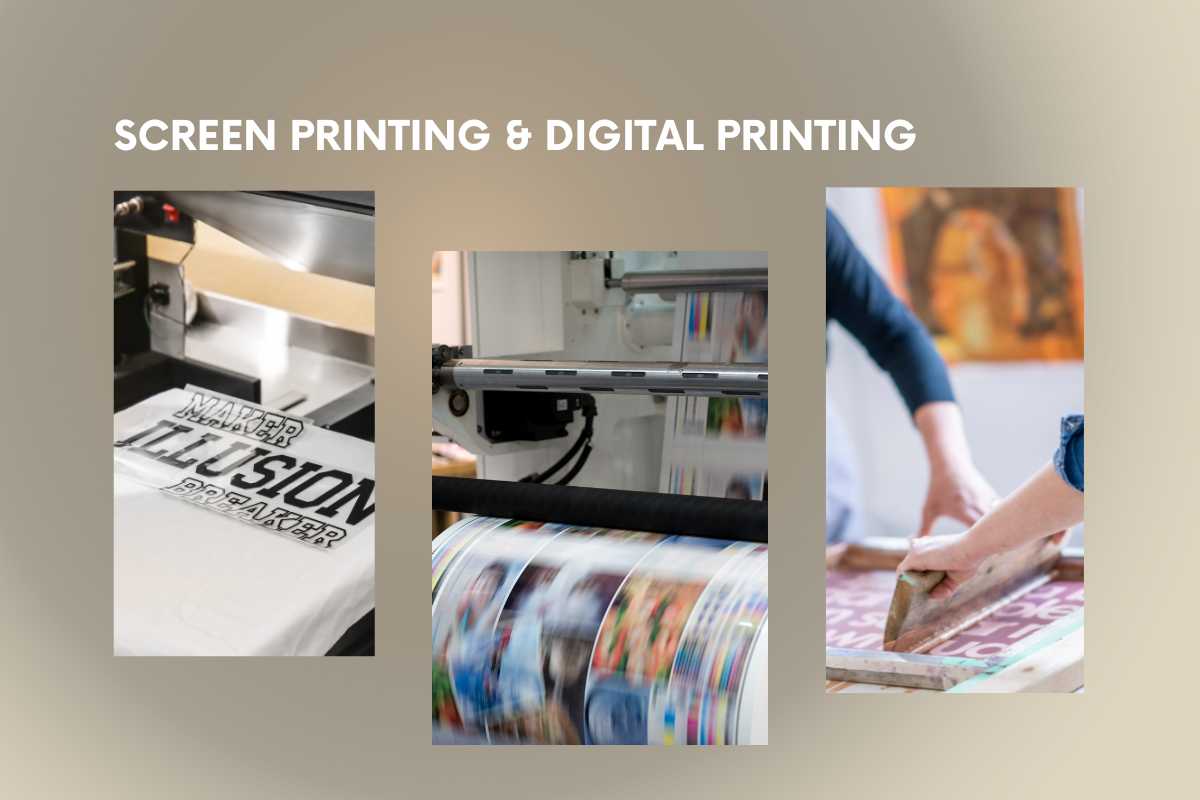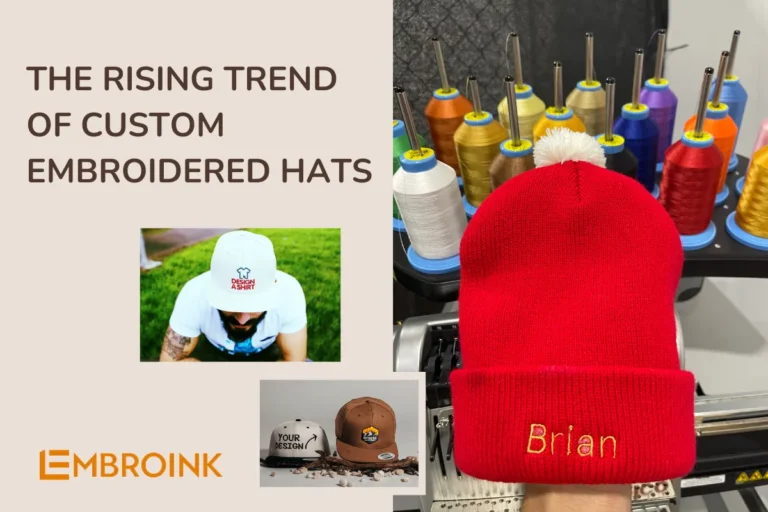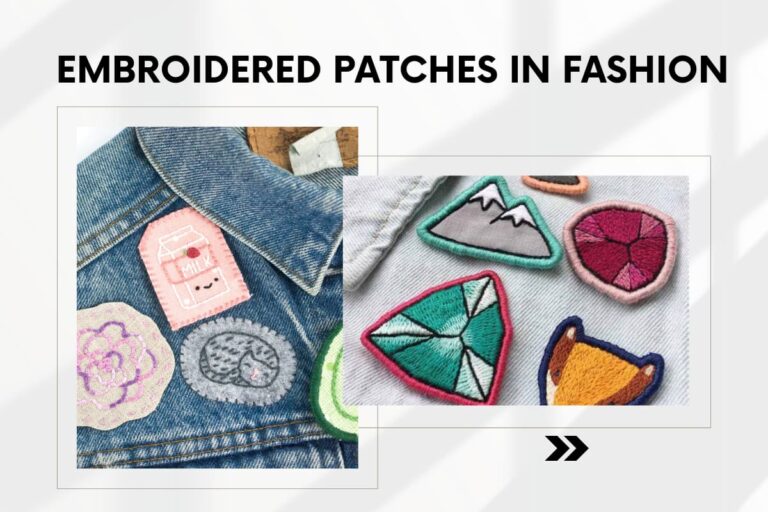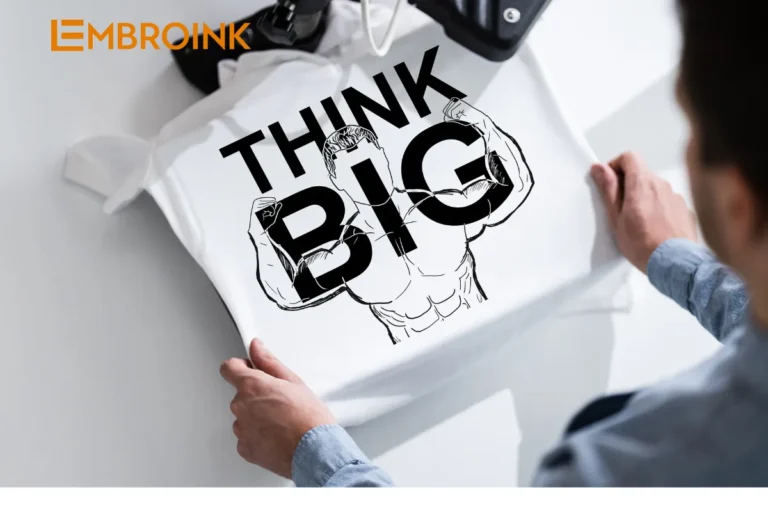Screen Printing vs. Digital Printing: Which is the best choice for project?
When it comes to printing techniques, the choice between screen printing and digital printing can significantly impact the outcome of your project. Each method offers unique benefits depending on your specific needs, such as design complexity, order size, and material type. Understanding the strengths and limitations of both techniques will help you make an informed decision. In this guide, EmbroInk’ll explore the differences between screen printing and digital printing to help you choose the best option for your next project.
What is Screen printing?
Screen printing is a time-honored technique for transferring designs onto various surfaces, particularly fabric. It involves using a mesh screen, ink, and a stencil to create patterns or images. While it has evolved over the years, its basic process remains largely unchanged. The technique, which originated in China during the Song Dynasty (960–1279 AD), was initially used to print decorative patterns onto silk. Despite modern innovations and machinery, screen printing still follows the same core principles that have been practiced for centuries.
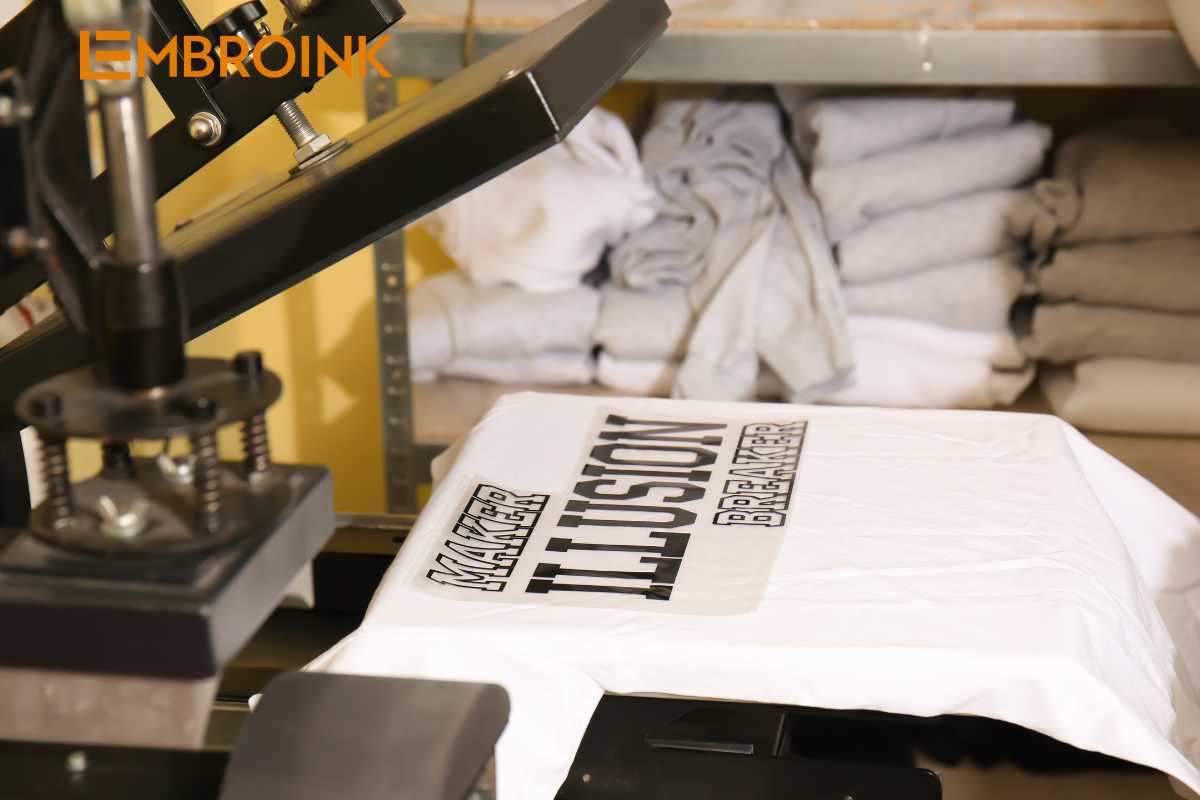
How the Screen Printing Process Works
Screen printing is known for its method of applying ink to a surface through stencils, with a separate stencil for each color in the design. Here’s an overview of how the process works:
- Stencil Creation: A separate stencil (or screen) is made for each color in the design. These stencils determine where the ink will be applied and where it will be blocked from reaching the material.
- Ink Application: Ink is applied to the screen and then pressed through the mesh onto the surface below. This is done one color at a time, ensuring precise control and producing vibrant, opaque colors.
- Layering Colors: After one color is applied, the product is left to dry briefly. The process is then repeated with the next screen and ink color, allowing for the layering of intricate, multi-colored designs.
- Curing the Ink: Once all colors are applied, the ink is cured or set using heat (typically a heat press, flash dryer, or conveyor dryer). This ensures the ink dries quickly and bonds firmly to the material, resulting in a durable, long-lasting design.
- Creating Special Effects: Screen printing’s versatility has led to the development of various specialty inks that can produce unique effects like distressing, crackling, or an iridescent finish, adding texture and visual appeal to the final product.
What is Digital Printing?
Digital printing is a modern technique that has significantly evolved over the past few decades. With continuous technological advancements, it has gained popularity, particularly for direct-to-garment (DTG) printing. This method provides a quick and efficient way to transfer detailed and vibrant designs onto various materials, including fabrics.
How the Digital Printing Process Works
The digital printing process is markedly different from traditional screen printing, offering a more direct and faster approach to transferring designs onto materials. Here’s a breakdown of the digital printing process:
- Surface Pre-Treatment: The material, such as a t-shirt, undergoes a pre-treatment to prepare its surface. This step is essential to prevent colors from bleeding or spreading uncontrollably on the fabric. The pre-treatment liquid is applied and then cured (dried) to ready the fabric for printing.
- Digital Design Transfer: After pre-treatment, the digital design is transferred onto the material using a specialized digital printing machine. This machine operates similarly to a standard digital printer used for paper but is specifically designed for fabrics and other materials. It precisely applies the design directly onto the material, enabling high-resolution images and a wide range of colors.
- Curing the Print: Once the digital design is applied, the material goes through another curing process. This step sets the dye of the digital print into the fabric, usually accomplished with a heat press or forced air dryer. Curing is vital for ensuring the durability of the print, making the design resistant to fading and wear from washing and regular use.
Screen Printing vs. Digital Printing: A Closer Look at Pros and Cons
Now that you have an overview of how both screen printing and digital printing work, let’s explore the pros and cons of each method. While both techniques are popular, one may better suit your specific needs.

Order Quantity
When considering printing services, understanding how different methods cater to various order volumes is crucial.
Screen Printing: Screen printing is generally less cost-effective for smaller orders due to the extensive setup involved, which includes creating and using multiple stencils. However, it becomes economically viable for bulk orders featuring the same design. Many screen printing services offer substantial discounts for large quantities since the same stencils can be reused for the entire batch, making this method ideal for customers planning to place large orders of the same product.
Digital Printing: In contrast, digital printing provides a flexible and cost-effective solution for orders of any size, ranging from a single item to large batches. The setup for digital printing is minimal, requiring only the preparation of the printing surface and the transfer of the digital file onto the garment. This ease of setup removes the constraints of minimum or maximum order requirements, making digital printing a preferred option for businesses, especially those focused on print-on-demand models.
Cost Implications
When assessing the costs associated with different printing methods, several key factors should be considered:
Initial Investment: Both screen printing and digital printing require a substantial initial investment. Professional-grade machines for these methods can range from a few thousand to tens of thousands of dollars. This high entry cost can pose a significant barrier for small businesses or individual creators.
Production Cost: In screen printing, the production cost per item decreases as the order quantity increases, thanks to the ability to reuse stencils for large batches. However, the setup process is labor-intensive and time-consuming, leading to higher costs for smaller orders.
In contrast, digital printing offers a more consistent cost structure, regardless of order size. The setup process is straightforward and quick, making it cost-effective even for smaller orders.
Scalability
Screen printing is more scalable for large orders due to the reduced marginal cost with increased quantity. While digital printing is flexible, it may not provide the same level of cost reduction for bulk orders. However, digital printing excels in scalability concerning order size variability and customization options, making it an excellent choice for businesses that require quick turnaround times and personalized designs.
ROI and Break-Even Point
Investing in screen printing equipment may be advantageous if you consistently fulfill large orders, as the break-even point is reached more quickly with larger batches. For businesses focusing on smaller, customized orders or varying designs, digital printing is likely to offer a quicker return on investment (ROI) due to its low setup cost and inherent flexibility.
Utilizing print-on-demand (POD) services, like Gelato, enables businesses and creators to access professional-grade printing without the significant initial investment. These services manage the printing and logistics, providing a cost-effective solution for high-quality printing technology. This significantly lowers the entry barrier for new businesses, allowing them to leverage professional printing capabilities without needing expensive equipment.
Print Locations and Design Placement
If you want tiny designs printed precisely 1.7 inches below the top of a pocket, screen printing may offer slightly more flexible placement options. However, for popular placements like the front, back, sleeve, or outer neck of a shirt, digital printing should work just fine. At Gelato, our free product design tools include numerous templates to help you find the perfect design placement for your custom apparel.
Durability
Screen printing is renowned for its durability. Once a design is screen-printed onto a shirt, you can trust it to last. The main drawback is that the colors may fade over time or experience cracking or peeling, although washing screen-printed items in hot water can help mitigate these issues.
On the other hand, digital printing technology has advanced significantly. At Gelato, we use direct-to-garment (DTG) printing tools that fuse specialty inks directly into the fabric fibers, minimizing fading and cracking. This process ensures that your customized shirt remains soft to the touch for years.
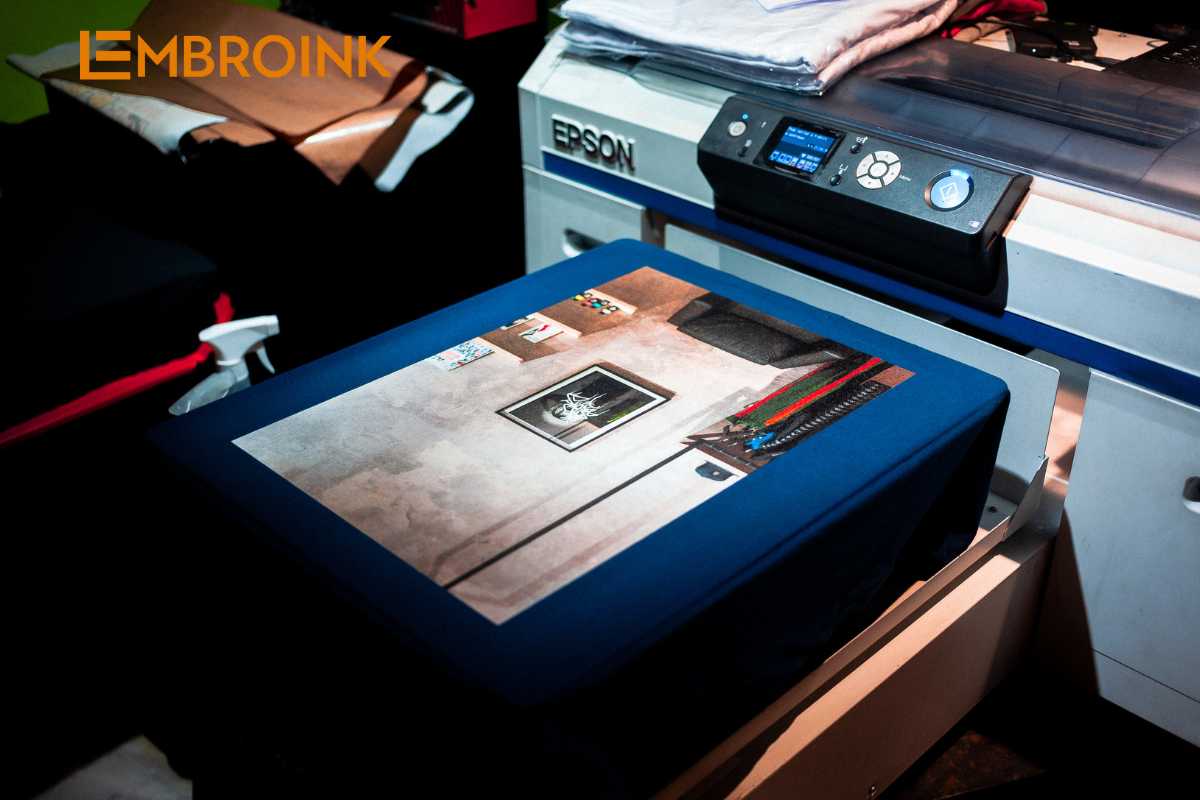
Design Color
Screen printing utilizes plastisol ink, which produces vibrant, saturated colors due to its opacity. It also offers options like bright neon colors and light-activated ink for glow-in-the-dark shirts. If you’re aiming to create special effect Halloween shirts or neon designs reminiscent of the ’80s, screen printing with specialty inks is likely the best choice. With its long history, screen printing can achieve effects like raised print, specific textures, precise color matching, and sparkly designs.
Conversely, direct-to-garment printing employs water-based inks that excel at color blending. While some DTG inks may be less vibrant than plastisol, this characteristic allows for smooth color transitions. Modern DTG printers have developed impressive multi-color capabilities, enabling them to replicate nearly any design’s color with exceptional resolution.
We recommend ordering samples of each product you intend to sell to avoid color-matching issues, especially on darker shirts. Since digital printing dye is less opaque, the shirt color may affect the final result if it bleeds through.
Sustainability
We prioritize sustainability and offer an eco-friendly approach to e-commerce. Our digital printing process uses 100% biodegradable DTG-TX2 garment inks that are non-toxic and environmentally friendly. These water-based inks also boast excellent color fastness, high elasticity, and non-cracking properties. Additionally, our commitment to sustainability includes energy-efficient digital printing machines that don’t produce harmful wastewater.
In contrast, many screen printing companies still use plastisol ink made from polyvinyl chloride (PVC), which can release harmful chemicals during the heating process. Moreover, many plastisol inks require toxic solvents for cleanup. However, recent advancements have led to more eco-friendly options in traditional screen printing, including water-based plastisol ink. Be sure to research potential screen printing partners to find those offering sustainable alternatives.
Design Intricacy
Digital printing is often the best choice for photos or complex designs due to its ability to reproduce intricate details. If your design contains small elements, thin lines, or precise details, digital printing is usually the preferred method. While screen printing can produce smaller details, it’s more challenging due to factors like screen tension and ink application speed. The main challenge lies in halftones, which are tiny dots that comprise an image. Digital printing machines can create much smaller halftones than those typical in screen printing, resulting in better detail retention over time.
Design Consistency
Have you ever received a batch of t-shirts from a screen printing company only to find inconsistencies in the final product? Many variables affect the screen printing process, from the pressure and angle of the shirt during stencil application to squeegee sharpness. This variability can make consistency difficult to achieve. In contrast, digital printing ensures uniformity, as once the machine processes a digital file, it can effortlessly reproduce it on as many shirts as needed. This ease of consistency contributes to the cost-effectiveness of digital printing.
Design Feel
There’s often a noticeable difference in the feel of t-shirts produced through screen printing versus digital printing. Screen printing leaves a thicker, more pronounced layer on the shirt, while digital printing results in a lighter feel. Although screen printing designs tend to be more durable thanks to plastisol ink, they can also be less breathable, as the ink can clog the shirt fibers, leading to a stiff and heavy sensation—particularly with larger designs.
For designs featuring soft, smooth gradients, digital printing is the better choice. Because the ink is infused into the fabric fibers, digitally printed designs feel more lightweight, smooth, and breathable.
How to choose the right printing method
Selecting the right printing method for your business or project requires careful consideration of various factors, including cost, quality, design requirements, and environmental impact. Both screen printing and digital printing have their unique advantages and limitations. Here’s a step-by-step guide to help you make an informed choice:
Understand design
Evaluate the nature of your design. If it involves high detail, gradients, or a wide color spectrum, digital printing is typically the preferred choice due to its precision and ability to handle complex designs. Conversely, for solid, vibrant colors or when exact color matching is essential (such as for brand logos), screen printing might be the better option.
Screen printing offers more versatility in design placement and is well-suited for larger designs or prints that wrap around the fabric. While digital printing is slightly less versatile in this regard, it can still accommodate most standard placements.
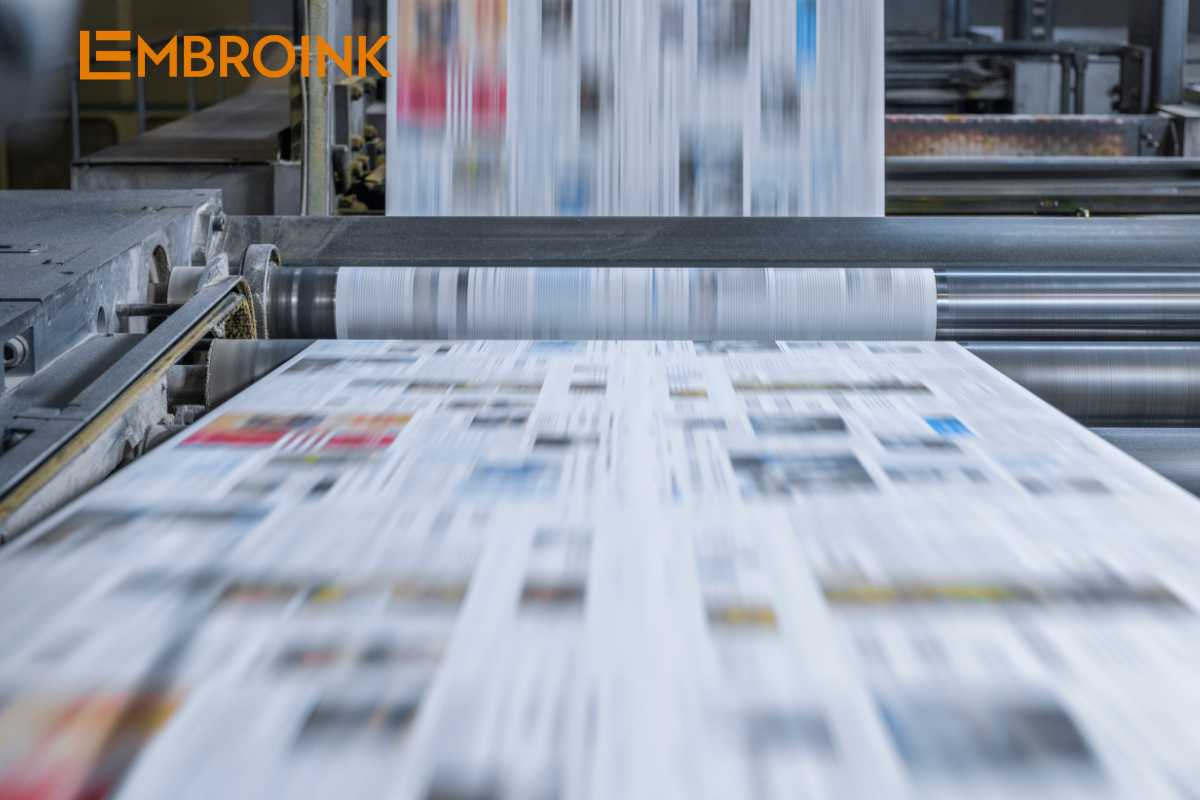
Consider the fabric or material
Take into account the fabric or material you’ll be printing on. Screen printing can be applied to a broader range of materials and fabric types, including thicker fabrics and unconventional items. Digital printing is generally suited for lighter fabrics and may not adhere as well to certain non-textile materials.
Additionally, screen-printed designs can be felt on the fabric and may feel heavier or stiffer, impacting breathability. In contrast, digital prints tend to be lighter and integrate more seamlessly with the fabric, maintaining its breathability and texture.
Quantity and Cost-Effectiveness
Consider your order quantity. If you’re planning a large order with the same design, screen printing often becomes more cost-effective due to economies of scale. For smaller orders or designs that require frequent changes, digital printing is typically more flexible and cost-effective, as it doesn’t involve the same initial setup costs.
Evaluate Durability and Usage
Assess the durability and expected usage of the printed items. Screen prints are known for their longevity, especially on suitable fabrics, but they can be prone to cracking or peeling over time with extensive wear or improper care. Digital prints are generally more resistant to cracking and can also be durable when properly cured and maintained.
Environmental Impact
Consider the environmental implications of your chosen printing method. Traditional screen printing can involve chemicals and processes that are not eco-friendly, although more sustainable options and inks are becoming available. Digital printing is generally more environmentally friendly, using less water and energy and producing less waste.
Making Your Decision
If possible, conduct a small test run to see how your design looks and feels with each printing method, especially if you’re deciding on a large-scale project or long-term business venture.
Reach out to professional printers who can provide insight into the best method for your specific needs and may offer options or innovations you haven’t considered. By considering these factors and how they align with your project or business objectives, you can make a well-informed decision about whether screen printing or digital printing is the right choice for you.

